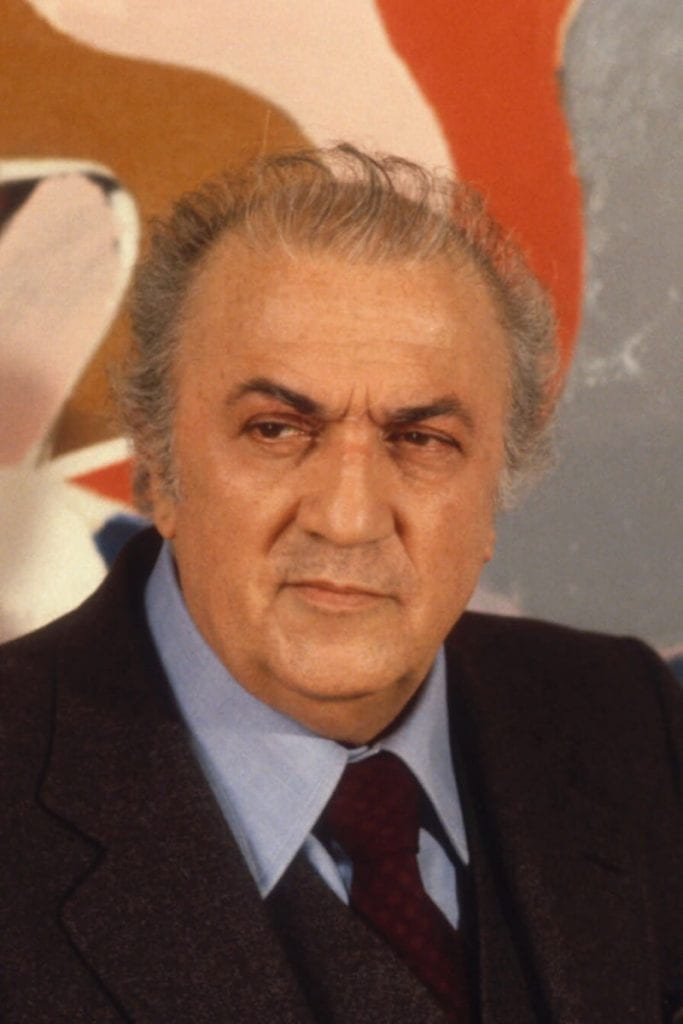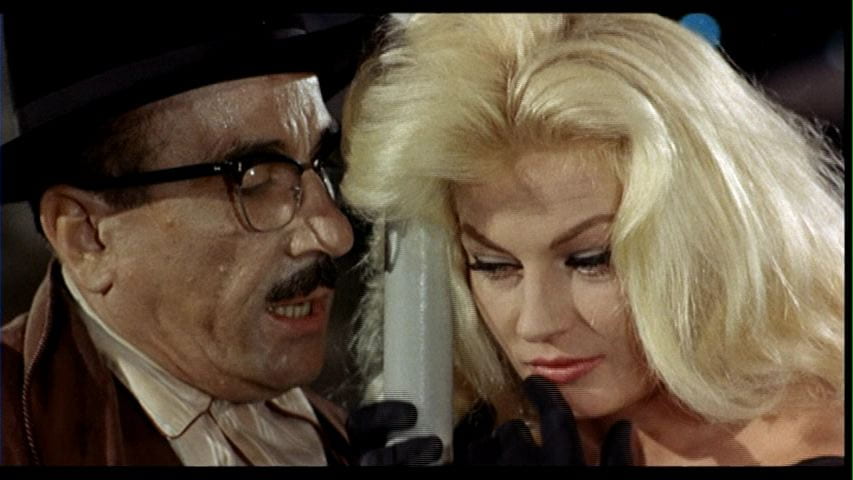
“The artist is the medium between his fantasies and the rest of the world.” — Federico Fellini
Scholars and film fans tend to divide the career of Federico Fellini, who would have celebrated his 100th birthday this year, into two periods. The first half is more influenced by the Italian neorealist movement that his mentor Roberto Rossellini partially created. The second, more controversial half is more fantastical in content and based more on his own memories and fantasies. But aside from subject matter there is another, technical quality which delineates Fellini’s body of work into two halves. That quality is color.
Fellini’s first work in color was a short film called The Temptation of Doctor Antonio (1962), a part of the anthology film Boccaccio 70. In many ways, it was a telling overture to the second half of his career. Its focus on viewing the world through the mind of protagonist Doctor Antonio — a moralist who crusades against an “indecent” milk advertisement featuring actor Anita Ekberg, who later torments him in a long dream sequence — would show his increasing preoccupation with dreams and fantasies in films such as Juliet of the Spirits (1964) and The Clowns (1970). While Fellini had explored toxic masculinity in films such as I Vitellioni (1953) and La Strada (1954), he had never satirized male sexual repression to the comical degree that he would in color films such as Amarcord (1973) and Fellini’s Casanova (1976). Most importantly, The Temptation of Doctor Antonio marked a big technical change for Fellini. Aside from one last black and white film — 8 ½ (1963), which dealt with the dreams and fantasies of a male protagonist a year after this short film — Fellini would never again make a film in black and white.

Fellini’s resulting color films would find his imagination unleashed. He would explore settings ranging from ancient Rome in Fellini-Satyricon (1969) to a cruise ship on the eve of World War I in And the Ship Sails On (1983), but he and his collaborators would make these places feel as if they were creations sprung fully formed from Fellini’s mind. The cinematography in these films — often shot by director of photography Giuseppe Rotunno — would feature bright colors that accentuated the strangeness of their increasingly surreal images.
These color films would become increasingly personal as Fellini kept making them. While 8 ½ is based on his life, it does not feature an appearance by Fellini himself. That would change as he began to direct hybrids of documentary and fiction that would feature him onscreen as a character, including The Clowns and Intervista (1987). Even his fictional films would be based on his memories, including but not limited to his Academy Award-winning film Amarcord. The colors in these films would have bright hues, as if to accentuate the feeling that we are watching Fellini recall beloved memories.


Fellini’s work in color has not received the same critical acclaim as his earlier films that he shot in black and white. They were criticized, especially at the time of their release, as indulgent or too strange. But if you view them for what they truly are — unbridled visual expressions of his fantasies and memories — they are fascinating looks into the mind of a great filmmaker.
IU Cinema is celebrating Fellini’s centenary with this semester’s President’s Choice series, which began with Juliet of the Spirits in January. Upcoming films in the series are 8 ½ on March 15 (which is also part of the Sunday Matinee Classics series), Fellini-Satyricon on March 29, and Fellini’s Roma on April 27.

Jesse Pasternack is a graduate of Indiana University. During his time at IU, Jesse was the co-president of the Indiana Student Cinema Guild. He also wrote about film, television, and pop culture for the Indiana Daily Student. Jesse has been a moderator at Michael Moore’s Traverse City Film Festival and is a friend of the Doug Loves Movies podcast. An aspiring professional writer-director, his own film work has appeared at Campus Movie Fest and the Anthology Film Archives in New York City.